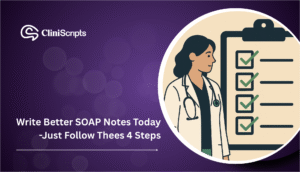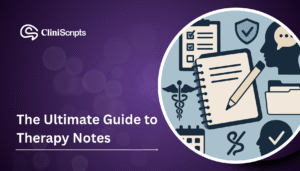Discover how DAP notes help therapists create structured therapy notes by organizing sessions into Data, Assessment, and Plan. A must-know for mental health professionals.
In the realm of therapy, keeping good documentation is just as important as the actual sessions. It not only tracks progress and outlines treatment plans but also helps mental health professionals communicate effectively with one another. One great way to document therapy sessions is by using DAP notes. This approach makes it easier for therapists to capture essential information in a clear and concise manner. In this blog post, we’ll dive into what DAP notes are, how to structure them, and why they’re valuable for both therapists and their clients.
Understanding DAP Notes
DAP notes provide a clear and organized way to document therapy sessions, focusing on three main components: Data, Assessment, and Plan. This simple structure helps therapists share essential information without getting bogged down in too much detail, making communication in the therapeutic setting much clearer.
Components of DAP Notes
1. Data: This part captures both objective observations and subjective insights from the client. It typically includes:
– The client’s mood and emotional state.
– Key statements from the client that reveal their thoughts and feelings.
– Notable behaviors or activities since the last session.
– Environmental factors that might be affecting the client’s situation.
2. Assessment: In this section, the therapist analyzes the data collected. This includes:
– Considering the client’s current challenges, strengths, or coping strategies.
– Relating the data to relevant theoretical frameworks or treatment methods.
– Noting any shifts in the client’s mental or emotional well-being.
3. Plan: The last part outlines the next steps in the client’s treatment journey. This may involve:
– Setting goals for the next session.
– Identifying interventions or techniques to be used.
– Suggesting any referrals or resources for additional support.
Real-Life Applications of DAP Notes
How DAP Notes Enhance the Therapy Process and Professional Practice
Using DAP notes effectively can greatly benefit both the therapeutic journey and a therapist’s professional development.
- Consistency: By sticking to a standard format, therapists ensure uniformity across sessions. This consistency supports clearer follow-ups and helps maintain continuity in treatment.
- Focus on Client Progress: DAP notes make it easier to track client progress over time. Therapists can observe how a client’s behaviors, emotions, and goals evolve—allowing them to assess treatment effectiveness and make timely adjustments.
- Facilitation of Supervision: For those under supervision, DAP notes provide a clear window into their clinical approach. Supervisors can evaluate the methods used, offer targeted feedback, and support professional growth.
- Compliance and Legal Protection: Accurate documentation is critical in case of legal reviews, audits, or ethical inquiries. Thorough therapy notes show that a therapist is adhering to professional standards and safeguarding client care.
Why DAP Notes are Trustworthy and Authoritative
If you’re interested in how technology is transforming therapy documentation, it’s worth exploring how AI is starting to reshape the landscape. In fact, many mental health clinics are now replacing generic medical scribes with therapy-specific AI tools to improve accuracy and reduce administrative burden. To learn more, check out this insightful article by Stacey Jiang on Quora.
When it comes to therapy, one of the biggest concerns is making sure the information shared is reliable. DAP notes are a trusted framework that many mental health professionals rely on, providing a solid foundation for credibility. Their clear and simple structure eliminates confusion, making it easy to communicate a client’s progress in a straightforward manner. Plus, this framework showcases the therapist’s expertise by highlighting their skill in analyzing and interpreting client behavior accurately. The organized presentation of thoughts reflects a high level of professionalism, showing a deep understanding and genuine care for the client’s well-being.
Mastering the DAP Note Framework
- Tips for Writing Effective DAP Notes: To get the most value from your DAP notes, keep these practical tips in mind:
- Keep It Short and Sweet: Include all essential information, but keep each section brief. Overly detailed notes can bury the key points and reduce clarity. Focus on what truly matters for clinical relevance.
- Use Simple Language: Avoid jargon or overly technical terms. Writing in clear, plain language ensures that both you and other mental health professionals can easily understand and reference the notes.
- Stick to the Facts: Especially in the Data section, focus on what you observe, not what you assume. Using objective language reduces bias and strengthens the accuracy of your therapy notes.
- Make Reviewing a Routine: Regularly review your DAP notes. This habit helps you identify patterns, monitor client progress, and refine your therapeutic approach over time.
Conclusion
In the world of therapy, DAP notes serve as a vital resource for both documentation and communication. They offer a straightforward structure—consisting of Data, Assessment, and Plan—that helps therapists share important information in a clear and efficient manner. Additionally, using DAP notes boosts the credibility and authority of therapeutic practices, while also aiding in the progress of clients and the growth of practitioners. By adopting this framework, therapists not only improve their documentation skills but also play a key role in maintaining the overall integrity of the therapeutic process.











